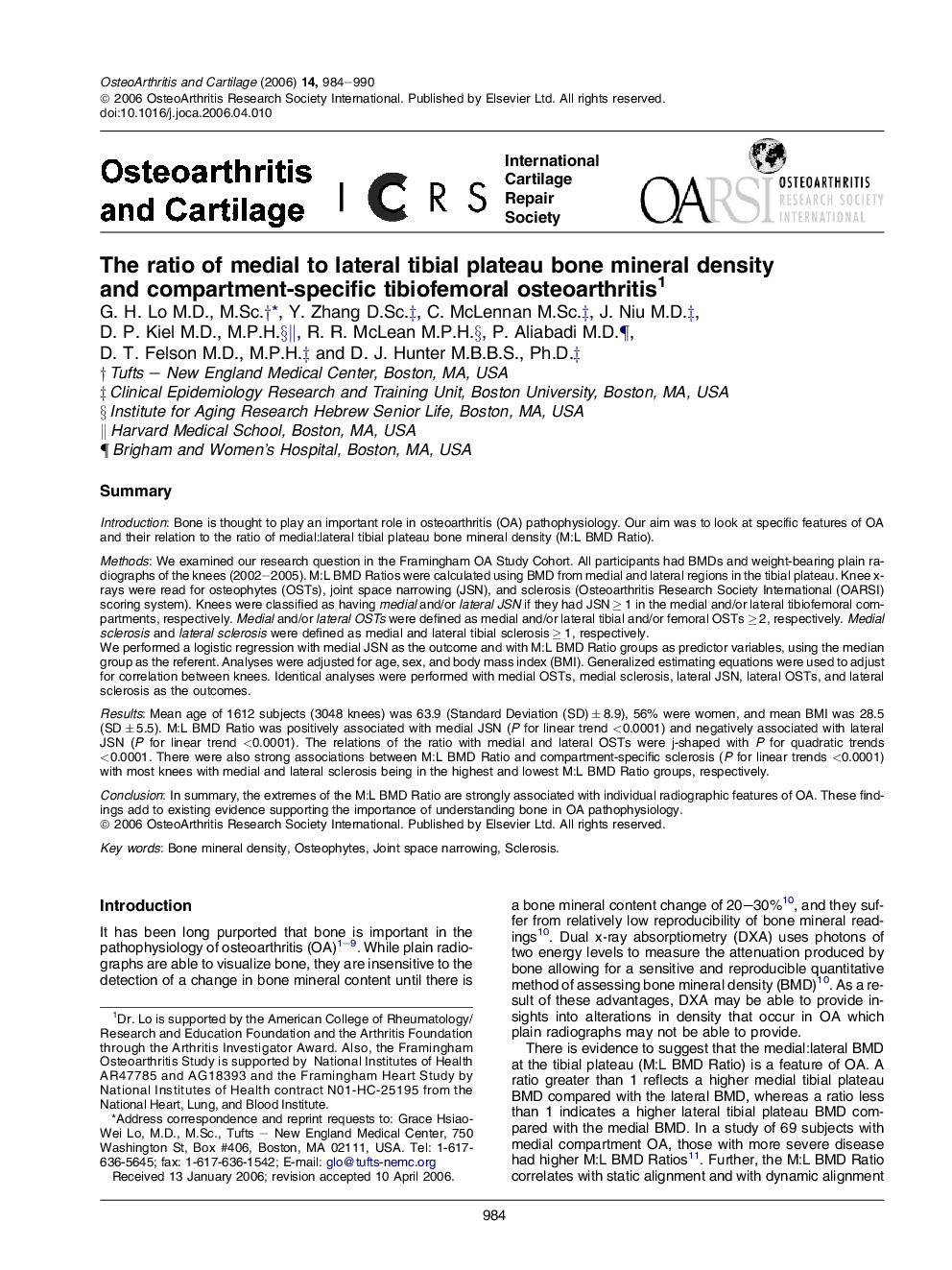| Article ID | Journal | Published Year | Pages | File Type |
|---|---|---|---|---|
| 3381203 | Osteoarthritis and Cartilage | 2006 | 7 Pages |
SummaryIntroductionBone is thought to play an important role in osteoarthritis (OA) pathophysiology. Our aim was to look at specific features of OA and their relation to the ratio of medial:lateral tibial plateau bone mineral density (M:L BMD Ratio).MethodsWe examined our research question in the Framingham OA Study Cohort. All participants had BMDs and weight-bearing plain radiographs of the knees (2002–2005). M:L BMD Ratios were calculated using BMD from medial and lateral regions in the tibial plateau. Knee x-rays were read for osteophytes (OSTs), joint space narrowing (JSN), and sclerosis (Osteoarthritis Research Society International (OARSI) scoring system). Knees were classified as having medial and/or lateral JSN if they had JSN ≥ 1 in the medial and/or lateral tibiofemoral compartments, respectively. Medial and/or lateral OSTs were defined as medial and/or lateral tibial and/or femoral OSTs ≥ 2, respectively. Medial sclerosis and lateral sclerosis were defined as medial and lateral tibial sclerosis ≥ 1, respectively.We performed a logistic regression with medial JSN as the outcome and with M:L BMD Ratio groups as predictor variables, using the median group as the referent. Analyses were adjusted for age, sex, and body mass index (BMI). Generalized estimating equations were used to adjust for correlation between knees. Identical analyses were performed with medial OSTs, medial sclerosis, lateral JSN, lateral OSTs, and lateral sclerosis as the outcomes.ResultsMean age of 1612 subjects (3048 knees) was 63.9 (Standard Deviation (SD) ± 8.9), 56% were women, and mean BMI was 28.5 (SD ± 5.5). M:L BMD Ratio was positively associated with medial JSN (P for linear trend <0.0001) and negatively associated with lateral JSN (P for linear trend <0.0001). The relations of the ratio with medial and lateral OSTs were j-shaped with P for quadratic trends <0.0001. There were also strong associations between M:L BMD Ratio and compartment-specific sclerosis (P for linear trends <0.0001) with most knees with medial and lateral sclerosis being in the highest and lowest M:L BMD Ratio groups, respectively.ConclusionIn summary, the extremes of the M:L BMD Ratio are strongly associated with individual radiographic features of OA. These findings add to existing evidence supporting the importance of understanding bone in OA pathophysiology.
